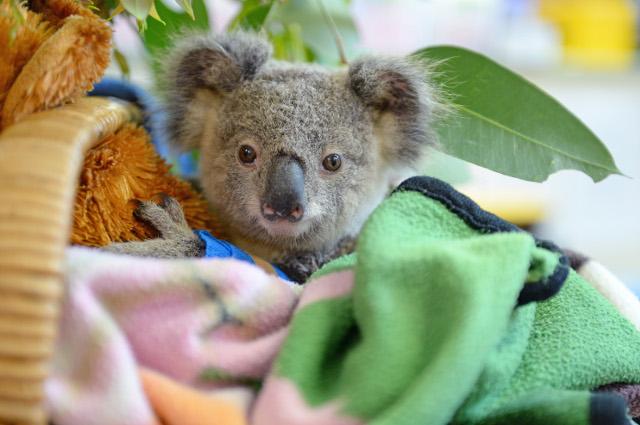-
About
-
Academics
- Physician Assistant
- Special Master’s (MBS)
-
Admissions & Financial Aid
- Tuition & Fees
-
Student Life
-
Research
- Research Labs & Centers
-
Local & Global Engagement
- Global Health Program
Helping Endangered Koalas—and Potentially Human Health, Too
Veterinary student’s research in Australia helped improve care for hundreds of animals with chlamydia, while medical research at Tufts looks for vaccine

Paola Massari, a research associate professor of immunology at Tufts University School of Medicine, believes koalas offer the perfect animal model to study the efficacy of new vaccines for chlamydia.
“Koalas naturally get infected by this bacterium and develop disease, relatively similarly to humans,” said Massari. “So a vaccine study in koalas is not experimental in the same way that a mouse model is. It is more similar to a veterinary clinical study—one with the chance to stop a very bad disease in the koalas.”
Massari has been working on developing a human vaccine for chlamydia for about eight years. This research spun out of her interest in developing vaccines against sexually transmitted infections, including those caused by Neisseria gonorrhoeae, the bacterium that causes gonorrhea in humans.
She took advantage of her experience with proteins on the surface of bacteria—called outer membrane proteins—from both these organisms to design new hybrid proteins.
Using the Neisseria outer membrane protein called PorB as a scaffold, she introduced parts of MOMP—a chlamydial outer membrane protein that is recognized by the immune system. The strategy was designed to facilitate production of a hybrid protein that’s a valuable candidate for a chlamydial vaccine, as MOMP so far has been very difficult to obtain in an intact form.
“I thought, ‘Why don’t I chop off the loops of the Neisseria protein, and put in the loops of chlamydia?’ Then I can obtain a hybrid protein to use in a vaccine,” she said.
Massari has since produced and examined twelve various combinations of MOMP loops added atop PorB and tried all these as potential vaccines in a mouse study of chlamydial infection. Three of the vaccines appeared protective in this model.
Now Massari has been talking to Peter Timms, a professor at University of the Sunshine Coast in Queensland, Australia, about trying her strategy in vaccine studies in koalas.
These kinds of studies are difficult, though. The research in wild koalas can only be done in Australia, and it is very expensive.
“Animals need to be captured several times to see if how they are faring and if the vaccine offers protection, and they must be handled very delicately by highly experienced researchers,” said Massari. “But the work is important in that it can give us good information, not only for the health of the koala, but also on how to draw parallels for findings for a human vaccine.”
Like several other sexually transmitted infections, chlamydia is increasing in prevalence among human populations worldwide. Massari said this is partly fueled by the fact that chlamydia can be asymptomatic in both women and men, allowing infection to go undetected and untreated in individuals, who then unknowingly further spread the bacterium.
A resurgence of gonorrhea has been linked to the progressive spread of strains of the bacterium that are resistant to the antibiotics used to treat it. And public-health professionals worry that chlamydia is showing signs of antibiotic resistance as well.
Developing vaccines for these all-too-common sexually transmitted infections is becoming more critical because someday soon it may become impossible to treat them with antibiotics, said Massari. In addition, by reducing the need to use antibiotics to treat illnesses like chlamydia in the first place, vaccines could help slow the development and spread of antibiotic-resistant strains.
Department:
Immunology